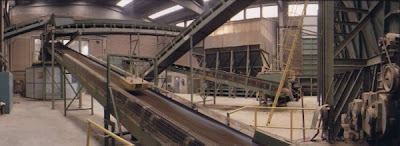The museum I like...

The keywords of this projects are quite clear.
design, production, memory, local territory, museum.
For the time being, I would like to focus on the museum bit of the overall process/project.
The museum I like should be a place where design is the added element to improve, change, distort or, in some cases, devastate my life.
At the same time it should be a place where I can play, I can listen to interesting stories, different tools and ways to learn.
Time machine: go back to when you were thirteen. After a day of classes battling demanding teachers and aggressive classmates, you are back home for lunch with your family (please allow me this memory of a time before the self-distruction of the Italian family), followed by the comfortable normal activities of the afternoon (again , no judo workshops, no drug rehab sessions, no psychoanalist: stay thirteen a little longer).
Dad and mum go back to work, or housekeeping, elder brother goes back to study so that later in life he will have a job, and you: you have to decide.
A nearly endless afternoon of possibilities: you could study for tomorrow's class (boring admittedly, but still needs doing). You could sink yourself in some fantastic book universe - Japanese animation ahd not yet claimed most of your time. Or you could go to the park, meet your friends, and start a long session of fun and games.
Do you remember that open feeling? Lunche dealt with, an afternoon of freedom - the last real freedom you'd have in your life, although of course you didn't know that at the time.
3 possible options
1. Open a notebook, start doing homework, review the classes, work through problems (LEARNING).
2. Enter for the first time Tolkien unverse, or watch Gundam. Or appropriate your elder brother's entirely inappropriate books and magazines (STORY).
3. Play football with your friends. Or start a never-ending Barbie-day (PLAY).
Learning/Story/Play
Learning/Story/Play
Imagine a table: on this table you see a graph-papaer notebook, the last Harry Potter book, a PlayStation.
Under the table are stink bombs, scratched knees and restless curiousity about sex.
Above the table parents preside over the process that will make you what you are now.
It would be nice to imagine this museum as a completely different "table".
Where there is no clear split between leanring, telling stories and playing. A table becoming a fluid mental attitude that takes the shape of the space provided - the shape of circumstances. It can be a stone quarry, a felt factory, all the places we have seen in December. A place, part of a world where art and poetry are a solid way to invest capital. A place where culture is basically an alibi.
A place where form follows fiction. This should be the departure point for travelling in the learning/story/play triangle that defines all our life.
If it is a museum, there must be some enticing story behind. Some solid scientific principle, and a dash of contradictions: some oddball element, palmistry, telepathy, little green men. There must be contradiction and conflict, because that's the source of stories, and stories are what people listen to.
Where do we learn induction, deduction and abduction? Sherlok Holmes
Where do we learn the scientific method and the love of knowledge? Jules Verne
Who teaches us the tragic sentiment of life and its imperfection? Diego Armando Maradona and Jimi Hendrix
Who takes us adventuring in the Brazilian jungle? Claude Levi-Strauss
Who makes us dizzy with hyperbolic spaces and infinite tesselations of infinite planes? M.C. Escher
This strange museum is not about things. It is about inventing new stories.
People will go back home with a head full of fiction, great fiction. And then they (actually, we) will realize that this was neither a movie nor a novel, bus simply the new world where we're going to live.
(thanks to Walter Aprile for sharing and developing my thoughts)






